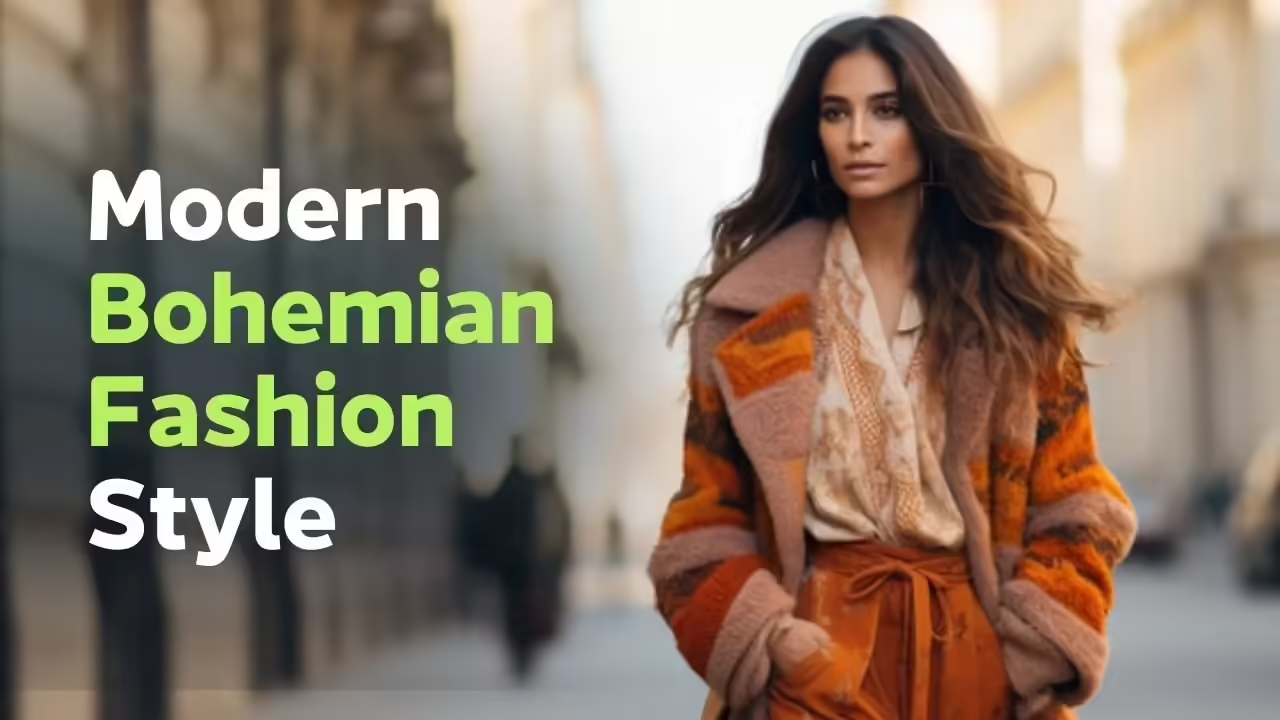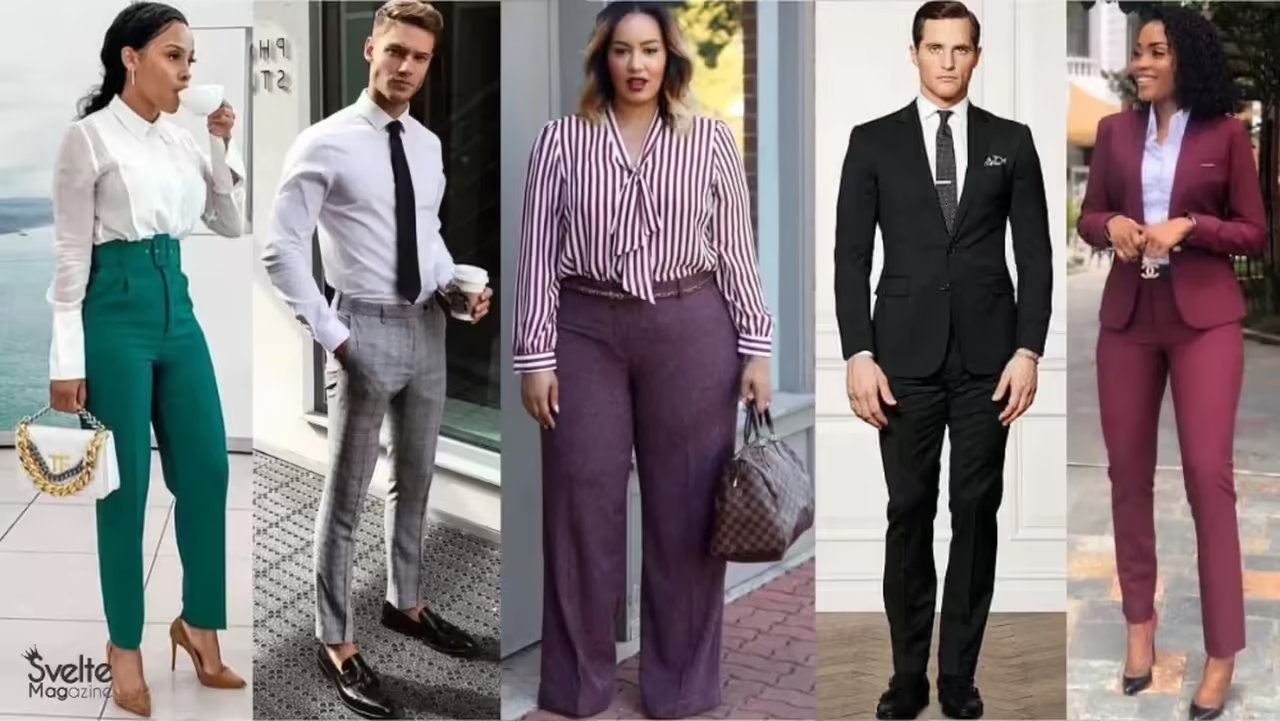
Choosing the right clothing for our body type can be a challenge, but it’s also an opportunity to highlight our best features and feel more comfortable and confident. There are different ways to classify body types, but one of the most common is dividing them into five categories: Hourglass, Triangle, Inverted Triangle, Rectangle, and Oval. Here are some general tips for each, but remember that the most important thing is to feel good in what you wear and adapt suggestions to your personal style.
Hourglass: Characterized by aligned shoulders and hips with a defined waist. It’s considered the most balanced and harmonious body type, allowing it to wear almost any garment. To enhance curves, it’s recommended to wear fitted clothing, V or round necklines, belts, pencil or flared skirts, and straight or skinny pants.
Triangle: Characterized by narrower shoulders than hips and a defined waist. Commonly known as pear-shaped. To balance the silhouette, wear clothing that adds volume and draws attention to the torso, such as blouses with puffed sleeves, patterns, necklaces, or short jackets. For the bottom, opt for plain and dark clothing with straight or flared cuts, avoiding pockets or embellishments that add volume.
Inverted Triangle: Characterized by broader shoulders than hips and an undefined waist. Commonly known as apple-shaped. To balance the silhouette, wear clothing that adds volume and movement to the hips and legs, such as skirts or pants with pleats, ruffles, or patterns. For the upper part, choose plain and light clothing with V or round necklines, avoiding shoulder pads or overly tight sleeves.
Rectangle: Characterized by shoulders, waist, and hips at the same level with minimal definition. The easiest body type to dress, as it can wear almost any garment without imbalance. To create a curvy effect, wear clothing that defines the waist, such as dresses or blouses with ruching, draping, or belts. Also, consider using textured or patterned clothing to add dynamism to the look.
Oval: Characterized by a more prominent abdomen than the rest of the body and slender limbs. The most challenging body type to dress, requiring the camouflage of the central area and highlighting other parts. Wear loose and flowing clothing that doesn’t accentuate the abdomen, such as tunics, empire dresses, or long shirts. Use V or round necklines and long necklaces to create a vertical line. For the bottom, choose plain and dark clothing with straight or flared cuts, avoiding folds or details that add volume.
Knowing Your Body Type: Discover Your Unique Silhouette in the Fashion World
The first step to mastering the art of dressing stylishly is to understand and embrace your body type. Here, we break down different body types and provide practical tools to identify yours:
Rectangular: The Elegance of Symmetrical Proportions Characteristics: Shoulders, waist, and hips have similar lines. Identification: Your measurements are proportionate, and your waist is not well-defined.
Triangle: Highlighting Femininity in the Lower Part Characteristics: Shoulders narrower than hips. Identification: Your hips are the most prominent part of your body.
Pear: Softness and Well-Defined Curves Characteristics: Shoulders narrower than hips, with a well-defined waist. Identification: Your hips are wider than your shoulders, and your waist is clearly visible.
Hourglass: The Classic Feminine Silhouette Characteristics: Shoulders and hips aligned with a well-defined waist. Identification: Your shoulders and hips have similar proportions, and your waist is narrow.
Apple: Elegance in Rounded Shapes Characteristics: Shoulders and hips have similar lines, with a less defined waist. Identification: The upper part of your body is fuller than the lower, and your waist tends to be wider.
Oval: Softness and Harmony in Generous Curves Characteristics: Shoulders narrower than hips, with a less defined waist. Identification: Your hips are wider than your shoulders, and your abdomen is fuller.
How to Identify Your Body Type: Practical Guide
Take Your Measurements: Use a measuring tape to measure your shoulders, waist, and hips. Compare these measurements to determine proportions.
Observe Your Silhouette: Visually examine your body shape in front of a mirror. Pay attention to the relationship between your shoulders, waist, and hips.
Analyze Weight Distribution: Observe where weight tends to accumulate more on your body. This can help identify certain traits of your body type.
Consult Visual Examples: Look for reference images representing different body types. Compare these images with your own silhouette to determine the closest match.
By knowing and accepting your body type, you’ll be better equipped to choose clothing that enhances your natural attributes and makes you feel confident and fabulous on any occasion. This knowledge is the foundation for building a personal style that celebrates your uniqueness.
Considerations for Color and Patterns: Influencing Body Perception
When selecting clothing that suits your body type, color and pattern considerations play a crucial role in creating a balanced and flattering appearance. Colors and patterns not only affect the overall aesthetics of your outfit but can also significantly influence the visual perception of your figure. Here, we’ll explore how colors and patterns can enhance your attributes and provide a more flattering appearance.
Influence of Colors on Visual Perception:
Colors have the power to highlight or minimize different areas of your body. To enhance your attributes, it’s essential to understand how colors work visually. Some practical suggestions include:
Dark Colors for Slimming: Dark tones, such as black, navy, and gray, tend to have a slimming effect. These colors create a visual illusion that helps smooth curves and accentuate a more streamlined silhouette.
Bright Colors to Highlight: Brighter and more vibrant colors can draw attention to specific areas. If you want to highlight your bust or hips, opt for vibrant tones in those specific zones.
Color Blocking for Balance: Experiment with color-blocking techniques to achieve visual balance. Placing darker colors in areas you want to minimize and lighter colors in areas you want to highlight can create a harmonious appearance.
Strategic Patterns:
Patterns can be valuable allies or visual challenges, depending on how you use them. Here are some suggestions for incorporating patterns effectively:
Small Patterns for Problem Areas: If you have an area you prefer to downplay, opt for small and subtle patterns in that region. This will help divert attention and visually minimize that area.
Vertical Stripes for Lengthening: Vertical stripes have the visual effect of elongating the figure. Choose garments with vertical stripes to create the illusion of additional height and a slimmer figure.
Asymmetrical Patterns to Highlight Curves: Asymmetrical patterns can be excellent allies for highlighting curves. Place the pattern strategically to emphasize your natural shapes and create a more dynamic appearance.
Practical Tips for Choosing Colors:
Know Your Flattering Colors: Identify which colors complement your skin tone, eyes, and hair. By choosing colors that complement your personal palette, you’ll achieve a more radiant look.
Don’t Fear Neutrals: Neutral colors, such as beige, white, and gray, are versatile options that can easily be paired. Use them as a base and add touches of color to stand out.
Experiment with Complementary Colors: The color wheel can be a useful guide. Complementary colors (opposites on the wheel) can create striking combinations and highlight certain aspects of your outfit.
Accessories that Complement: Balancing the Figure with Style
Accessories play a fundamental role not only in personal expression but also in creating visual balance in the figure. From jewelry to handbags, the right choice of accessories can highlight your attributes and bring harmony to your overall appearance. Below, we’ll explore the importance of accessories and provide suggestions on the ideal type of jewelry, bags, and other accessories for each body type.
The Importance of Accessories for Balancing:
Positive Accentuation: Well-chosen accessories can highlight your most flattering features. A striking piece of jewelry or an elegant bag can direct attention to specific areas, creating a more balanced look.
Diverting Attention: Accessories can also divert attention from areas you’d prefer to minimize. For example, a statement necklace can draw attention away from the abdominal area, while elegant earrings can direct focus to the face.
Adding Personality: Accessories are an excellent way to express your personal style. They can transform a simple outfit into something unique and reflect your individuality.
Jewelry for Each Body Type:
Hourglass Body: Individuals with this figure can opt for jewelry that emphasizes the waist, such as bold belts, wide bracelets, or short necklaces.
Inverted Triangle Body: To balance broad shoulders, choose long necklaces that fall toward the bust area. Bracelets and rings can attract attention to the hands.
Triangle Body: Focus on necklaces that fall in the neckline area to draw attention to the center. Delicate bracelets and rings can also complement this figure.
Rectangle Body: Opt for jewelry that creates visual curves, such as short necklaces or eye-catching bracelets. Dangling earrings can add dimension to the upper body.
Bags and Other Accessories:
Proportional Bag Size: The size of the bag should be proportional to the body. Taller individuals can go for larger bags, while smaller individuals may favor more compact styles.
Belts to Define the Waist: A well-placed belt can be a transformative accessory to define the waist and create a more attractive shape.
Sunglasses for Varied Faces: The shape of sunglasses can influence facial perception. Choose a style that complements the shape of your face.
Scarves and Shawls for Finishing Touches: These versatile accessories can add color and texture. Individuals with rounder faces may prefer longer scarves to visually elongate the neck.
Personal Care and Confidence
The relationship between personal care and self-confidence is fundamental to emotional well-being and a positive self-image. Self-acceptance and confidence are mutually reinforcing pillars, and personal care plays a crucial role in this process. Below, we’ll explore the importance of self-acceptance and how personal care contributes to a positive self-image.
Self-Acceptance: The Foundation of Self-Confidence
Self-acceptance is the process of recognizing and embracing all dimensions of oneself, including strengths and areas for improvement. It involves cultivating a positive relationship with oneself, freeing oneself from unrealistic standards, and embracing individuality. Self-acceptance is essential for building a strong foundation of self-confidence.
When we accept ourselves as we are, we acknowledge our intrinsic worth and cease to rely excessively on external approval. This creates fertile ground for personal growth and self-confidence. Confidence doesn’t solely arise from external achievements but also from internal acceptance and appreciation of our unique qualities.
Personal Care as a Manifestation of Self-Acceptance
Personal care encompasses a wide range of practices aimed at maintaining and enhancing physical, emotional, and mental health. This process involves not only external aspects such as hygiene and appearance but also attending to internal needs like rest, nutrition, and stress management.
Committing to personal care sends a clear message of self-worth and self-respect. This manifestation of self-acceptance translates into a positive attitude toward our self-image and significantly contributes to building self-confidence.
How Personal Care Contributes to a Positive Self-Image
Physical Well-Being: Personal care includes habits that promote physical health, such as a balanced diet, regular physical activity, and adequate rest. These elements contribute to vitality and maintaining a positive physical image, influencing one’s self-perception.
External Appearance: Attention to personal hygiene, wardrobe choices, and external presentation plays a key role in building a positive image. It’s not just about adhering to aesthetic standards but also about carefully choosing what makes us feel comfortable and authentic. Dressing in a way that reflects our identity contributes to self-confidence.
Mental and Emotional Health: Personal care also addresses mental and emotional aspects, such as stress management, practicing gratitude, and engaging in activities that promote happiness. Emotional and mental balance is essential for maintaining a positive self-perspective.
Authenticity and Self-Expression: Adopting a personal care approach allows us to connect with our authenticity. Self-expression through the conscious choice of activities and practices that nurture us strengthens our internal connection, fostering a positive and authentic self-image.







